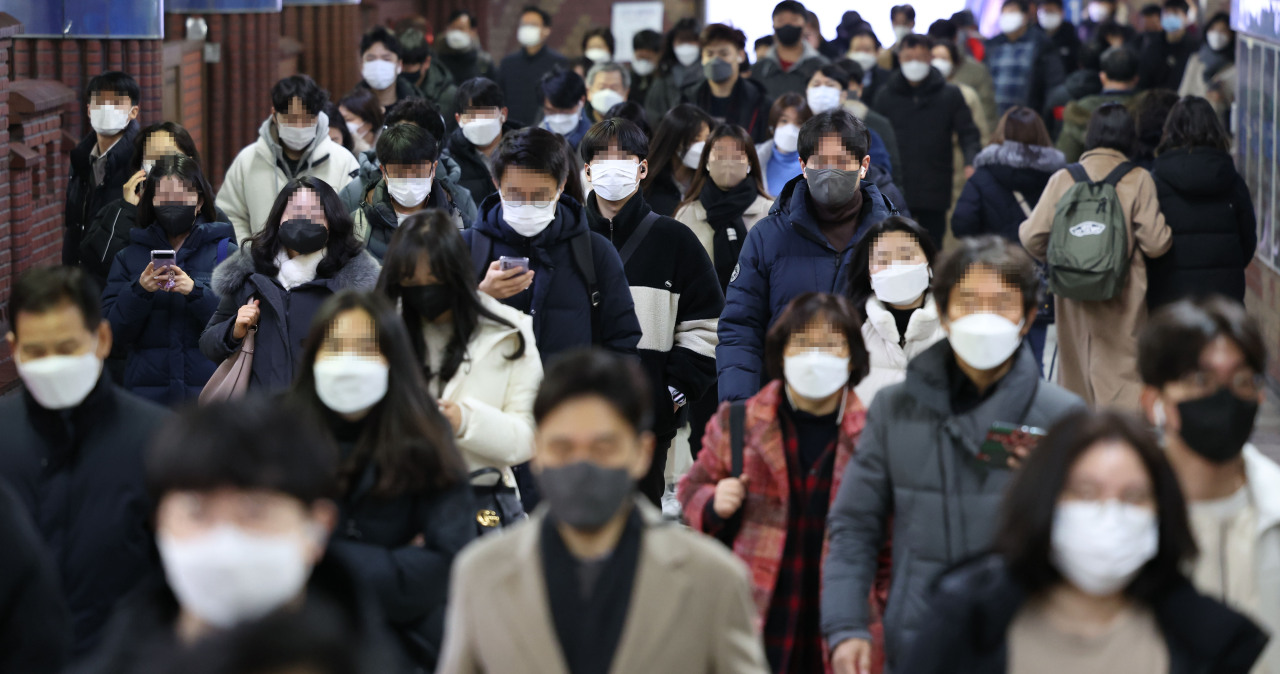 |
Passengers wearing a mask walk through Seoul Station on Jan. 26. (Yonhap) |
Seoul Metro saw the number of passengers drop by 25 percent last year compared to pre-pandemic levels, new data revealed on Thursday.
The subway operator said some 1.95 billion passengers used the city’s subway system in 2021, which also connects to neighboring areas such as Incheon and Gyeonggi.
The figure stood at 2.67 billion in 2019 and 1.93 billion in 2020, based on the subway lines operated by Seoul Metro. This highlights the COVID-19 pandemic’s impact on one of the largest subway networks in the world.
Revenue stood at 1.15 trillion won ($953.2 million), down by 482.5 billion won compared to pre-pandemic levels. Seoul Metro said the decline in revenue is adding “further financial pressure” on the public company, which is owned by the Seoul Metropolitan Government.
“A drop in traffic revenue spells crisis for our operation. Government funding to compensate for free rides is crucial this year,” the company said in a statement.
Seoul Metro offers free rides to senior citizens aged 65 and over and disabled people. The policy began in 1984 for the elderly, and was extended to those with disabilities in 1991.
But the social welfare policy has proven to be a financial burden in a country with an rapidly aging population, prompting calls for revision.
According to the latest data, some 205 million passengers between Line 1 and Line 8 enjoyed free rides last year, accounting for 15.9 percent of all passengers.
Gangnam and Jongno see biggest drops in passengers When broken down by station, Gangnam Station and Jonggak Station saw some of the biggest drops in passenger numbers, two of the biggest office areas in the city.
Gangnam Station was the busiest station in the city in 2021, followed by Jamsil Station. Gangnam Station saw its daily average passengers drop by 6.7 percent, which amounts to 6,290 people. Jonggak Station was hit with a 10.9 percent drop.
“Home to many companies, both stations are in central business and commercial districts. The number of passengers appears to have dropped, as working from home took off,” Seoul Metro explained.
Seongsu Station in eastern Seoul and Yeouinaru Station, which is located by the Han River, enjoyed a jump in traffic, up by a daily average of 9.4 percent and 26 percent, respectively.
Seongsu has emerged in recent years as a cultural hotspot boasting streets full of independent cafes and small shops as well as offices occupied by smaller companies. The opening of The Hyundai Seoul, the city’s biggest department store which opened last year, drove up passenger numbers at Yeouinaru Station, Seoul Metro said.
By Yim Hyun-su (
hyunsu@heraldcorp.com)





![[AtoZ of Korean mind] Ever noticed some Koreans talk to themselves?](http://res.heraldm.com/phpwas/restmb_idxmake.php?idx=644&simg=/content/image/2024/11/03/20241103050186_0.jpg)


